Hammer Productions and British Horror
Pre-1980s British horror was associated with Gothic and mythical fantasy. But now the return of Hammer and some daring directors is giving a new lease on life to British horror films that can be distinctly set apart from Hollywood’s domination.
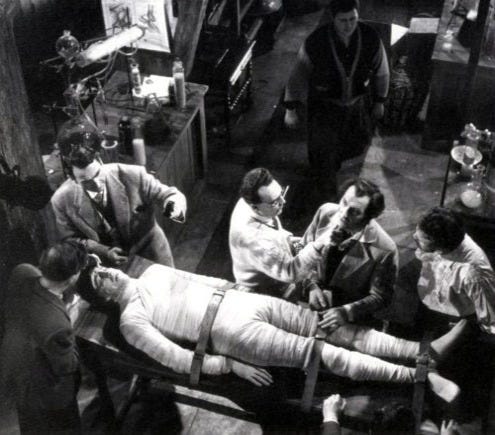
Hammer Horror Productions
Horror wasn’t first on the agenda for the production company. Led by Anthony Hinds (his father originally formed the company in 1934) and James Carreras, Hammer started making its mark in the British film industry during the late 1940s and early 1950s, choosing to film at stately homes in and around London rather than studios as it was considerably cheaper. What played a major part in their success was signing with big American film producer Robert Lippert, who distributed their productions in the U.S. in exchange for promotion of his work. Hinds and Carreras also took Lippert's advice and used American leads in a lot of their productions in the mid 1950s, which grabbed the attentions of Hollywood.
“Quatermass”

It was the “Quatermass” saga that kick started Hammer Horror, an adaptation of Nigel Kneale’s BBC TV science fiction serial. The new "X" certificate stamped on horror films and an American in the lead role gave them the edge to fill a horror-shaped gap in the film market. Hammer took advantage of this by deliberately titling the 1955 low-budget hit “The Quatermass Xperiment” (which does share similarities with another science fiction/horror film made 20 years later). A group of astronauts is launched into space in a rocket but only one member, Victor Carroon, returns to Earth. (Victor is played by Richard Wordsworth. And yes, the great-great-grandson of poet William Wordsworth starred in a Hammer horror film.) Gradually, Victor starts to mutate into an alien organism that threatens humanity. After Victor escapes from the custody of Inspector Lomax of Scotland Yard, Lomax embarks on a manhunt to track Victor down.
The release and success of Hammer’s “The Quatermass Xperiment” picked up the attention of major American distributor United Artists right around the time Hammer’s relationship with Lippert ended. Three sequels followed, all written by Kneale, who based them all around the BBC series.
“The Curse of Frankenstein” (1957)
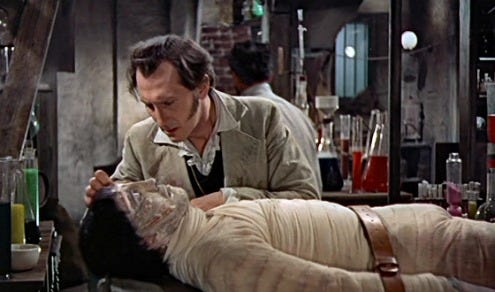
Around the time Hammer was filming “Quatermass 2” (1957), they also started on "The Curse of Frankenstein," a film for which the company became much better known. As an added bonus, it was Hammer's first colour production with bloody violence to draw in the crowds. Peter Cushing (Hammer regular and all-around horror star) is Baron Victor Frankenstein, who retells the story of how he came to be convicted of murder. The best part of the film is acting superstar Christopher Lee as the monster — cast because of his height not acting ability. The release of “The Curse of Frankenstein” marked a revival in Gothic horror that was further solidified by Hammer’s next production.
“Dracula” (1958)
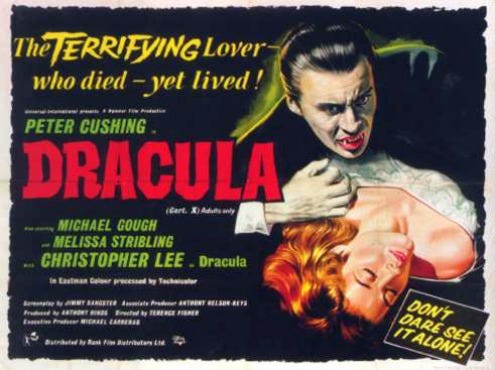
This was also in colour, and Hammer came up against the British Board of Film Classification's concern with the amount of blood in the film. Cushing and Lee paired up again this time as Van Helsing and the Count, respectively, and with Terence Fisher directing. It was released to worldwide success, breaking box office records in the United Kingdom and United States.
Hammer brought out a number of sequels for “Dracula," “Frankenstein” and their other Gothic hit, “The Mummy” (1959), and it also produced a few shorts reminiscent of Alfred Hitchcock’s work. However, the late 1960s and early 1970s, the door Hammer had opened for explicit gore and violence on screen was wide open, and it struggled to compete with an influx of American horror, such as 1968's “Night of the Living Dead."
Gothic horror quickly went out of style, perhaps too camp yand dated for audiences becoming seasoned to graphic violence, blood and more modern themes. Failure to adapt to these "new" styles of horror caused Hammer to disappear from the big screen by the 1980s although Hammer persisted on television with its series “Hammer House of Mystery and Suspense,” aired only in Britain.
Post-Hammer
Once Hammer left the scene, British horror all but disappeared from the film market. American horror films were being produced left, right and centre in the 1980s and 1990s. However, even without the presence of the Hammer monolith, some British horror films became mainstream.
“The Wicker Man” (1973)
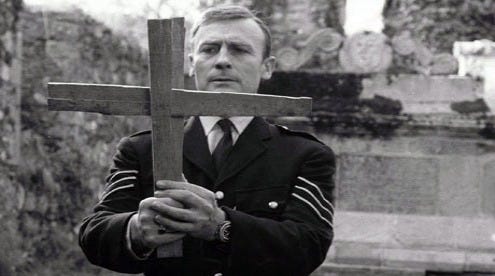
Despite its lack of success at the time, "The Wicker Man" is now a definitive classic of the horror genre listed right up there with “The Shining” (1980) and “Halloween” (1978). It even stars Christopher Lee as leader of the locals, Lord Summerisle. Sergeant Neil Howie (Edward Woodward), a devout Christian, goes to the Scottish island of Summerisle to search for missing local girl Rowan Morrison (Gerry Cowper) after he's sent an anonymous letter about her disappearance. He discovers that the locals inhabiting the island worship ancient pagan gods, something mystifying and alien to himself and his beliefs.
“The Awakening” (1980)
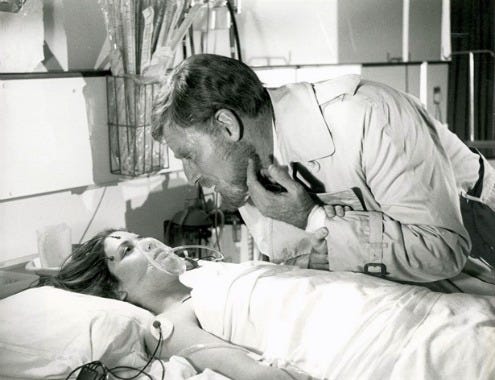
Before “Four Weddings and a Funeral” (1994) and “Harry Potter and the Goblet of Fire” (2005), Mike Newell was responsible for some pretty hardcore horror — in the form of this mystical film and also "Bad Blood," a movie about a New Zealand mass murderer. Charlton Heston stars as archaeologist Matthew Corbeck, who is in Egypt on a dig. At the same time he discovers and opens a sarcophagus, his wife gives birth to his daughter. Years later, it starts to become clear that the Egyptian queen inside the tomb has possessed her, and Matthew must destroy her before she destroys the world.
“Hellraiser” (1987)
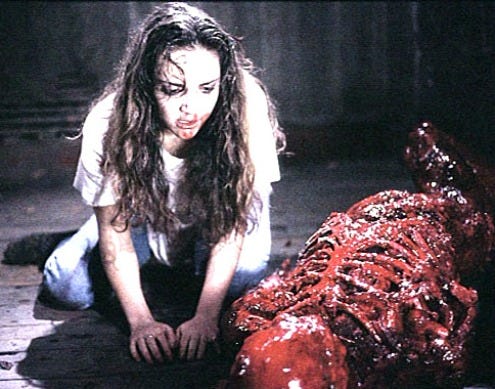
This disturbed film combines elements of Gothic horror with modern elements and plenty of squeamishness and gore to please the audiences. Frank (Sean Chapman) loses his earthly body to a mystical S&M realm after completing a puzzle he bought in Morocco. His brother Larry (Andrew Robinson) thinking him dead or gone, moves into his house with his wife Julia (Claire Higgins), who also had an affair with Frank. After a drop of blood lands on the attic floor, Frank’s emaciated body returns and is discovered by Julia. She is (manipulated) into bringing him victims to devour so that he may return to his normal self. Clive Barker’s nightmarish fantasy saga has a firm cult following.
Modern British Horror
There were more horror films produced in Britain over the last 10 years or so than it would seem.
“28 Days Later ...” (2002)
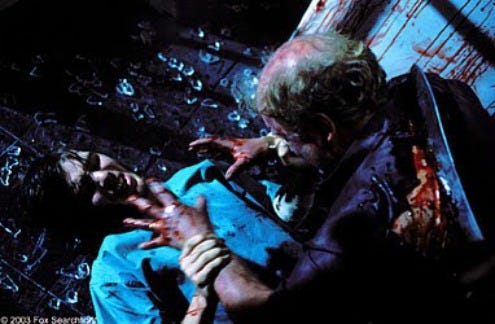
The bar was set high after the release of this apocalyptic zombie horror from Danny Boyle. This raw and gritty survivalist film boasts lots of gore and scares to satisfy the toughest horror enthusiast. Coupled with Boyle’s heavily realistic approach (in the style of "this could easily happen in the future"), "28 Days Later ..." makes for a firm classic horror. Jim (played by Cillian Murphy, also of Boyle's 2007 "Sunshine") wakes up from a coma to discover that the city of London is deserted. Through wandering round the empty streets, he soon discovers that a deadly virus, the Rage, has killed most of the population and left many as bloodthirsty zombies.
“The Descent” (2005)
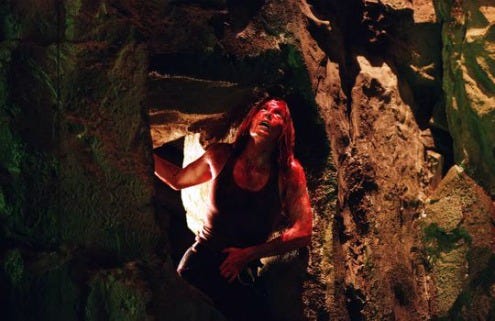
We discover that there is something far more terrifying than exploring unknown caves, and that’s the beastie’s lurking inside. A group of female mates/adrenaline junkies gets together in the Appalachian Mountains in Northern Carolina. Led by Juno (Natalie Mendoza of 2001's “Moulin Rouge!”), the team ventures into Boreham Caverns, but is soon trapped inside by a rock fall. Juno admits that they are actually in an unknown cave system, into which they must travel further to find a way out. As they go deeper into the caves, one by one they are picked off by humanoid monsters who were once cavers themselves. For safety reasons, a cave system was built at Pinewood Studios (where else?) with some exterior shots in Buckinghamshire.
“Doomsday” (2008)

The film contains similar themes to “28 Days Later ...” and is from the same director as “The Descent," Neil Marshall. After a deadly virus sweeps through Scotland leaving many dead, the whole country is quarantined and cut off from the rest of Britain. Years later, the virus emerges again, this time in London, and a team of scientists must race to find the cure behind the wall in Scotland. This small film has an interesting choice of cast: rough Cockney Bob Hoskins (1988's “Who Framed Roger Rabbit?”) is head scientist Bill Nelson and Malcom McDowell (1971's “A Clockwork Orange”) is a former scientist holed up in his castle in Scotland.
Hammer Revival
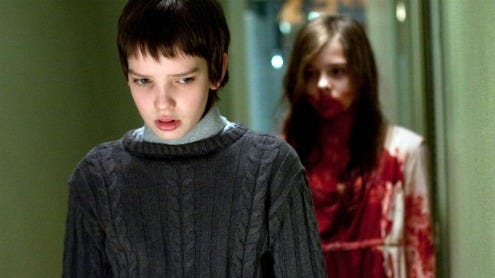
Hammer's reputation as masters of the horror genre served as an advantage for them when they were revived by media bigwig John De Mol (owner of Endemol Productions) in 2007. With a massive investment, they were ready to tackle the modern film market and released the book-to-screen adaptation “Let Me In” (2010), their first film in 30 years. This vampire story set in Sweden followed on from the Swedish version, “Let the Right One In” (2008). Kodi Smit-McPhee plays Owen, a bullied 12-year-old loner who befriends vampire Abby (Chloe Grace Moretz (2010's "Kick-Ass"). Performances from both leads are sweet and tender, which, when mixed in with the adult horror and grim violence, makes this swift remake highly acclaimed. If Hammer can produce more like this modern horror, the studio will be on its way to solidifying its reputation in the 21st Century.
“The Resident” (2011)
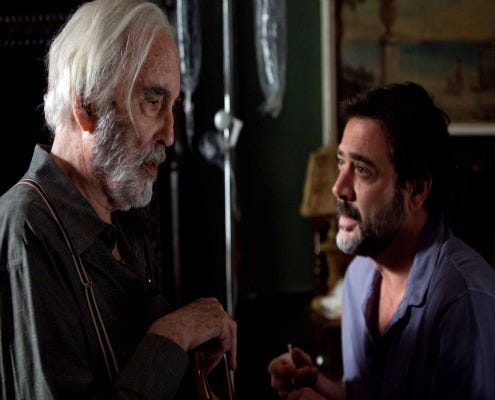
However, this next project was less than successful and also very different. Almost like a good-luck sendoff, Hammer veteran Christopher Lee makes an appearance in this stalker horror/thriller from new director Antti Jokinen. It is a dramatic deviation from Hammer's usual fare; no hint of the Gothic or guts and gore horror but instead a modern story of a single white female (Hilary Swank, 2007's "P.S. I Love You") in trouble. Unfortunately, it received only a limited release in the U.K, otherwise going straight to DVD everywhere else.


